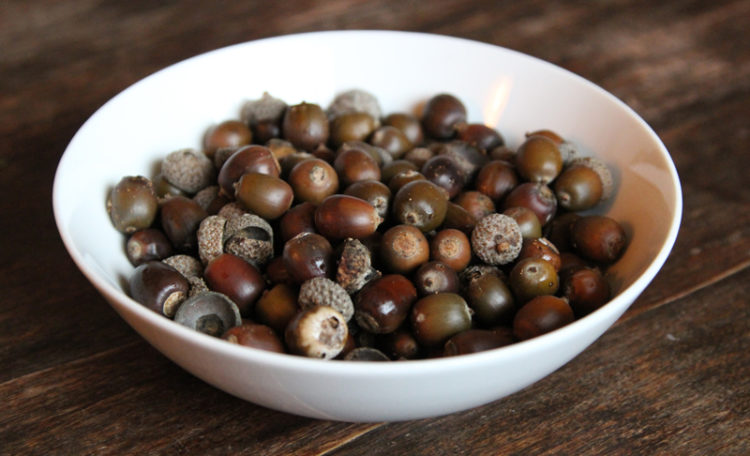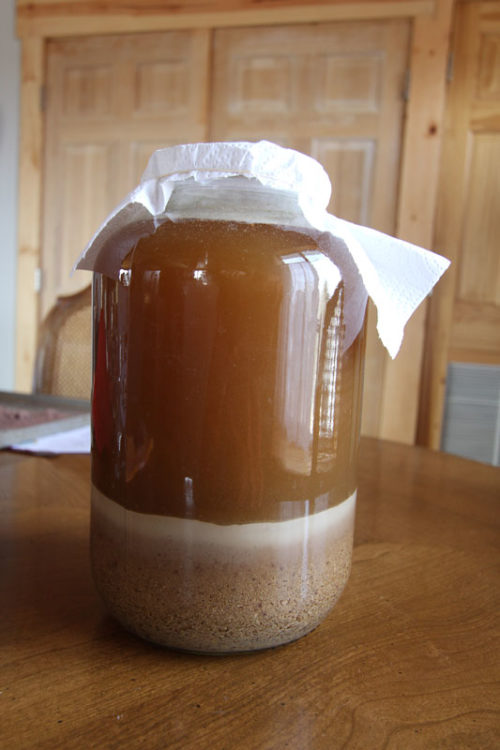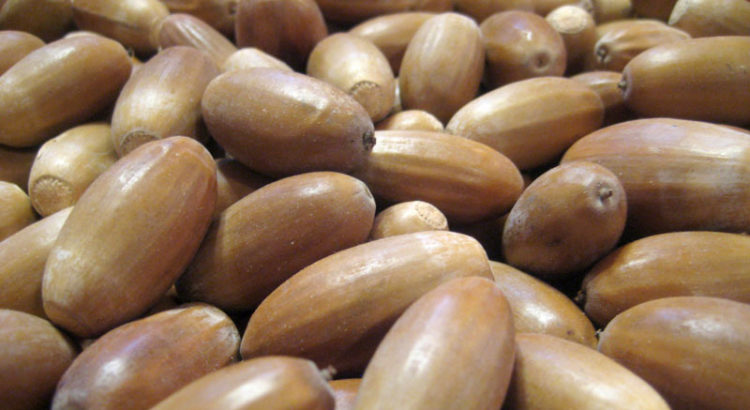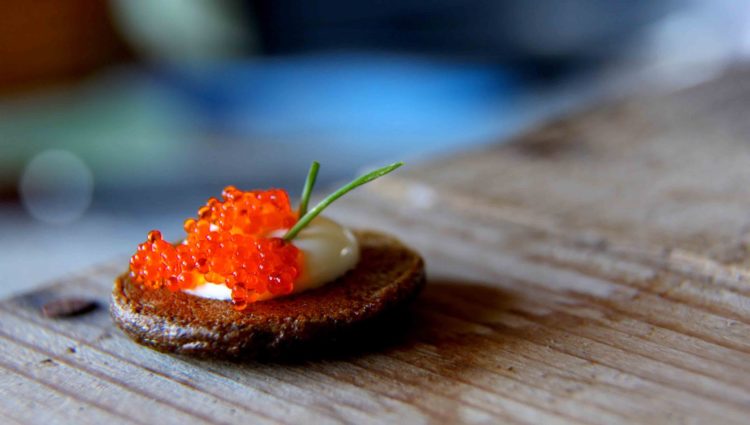
Workshop November 1 with ‘Butter’ of Hunger & Thirst
On Sunday, Nov. 1 from 10 a.m. to 2 p.m. the Laughing Coyote Project will offer a hands-on class near Boulder that teaches participants how to process acorns into food. I caught up with the instructor, Wendy Petty (whom you might know better as Butter, author of the lovely foraging-and-cooking blog Hunger & Thirst)–to find out more about the upcoming class, and her take on acorns and wildcrafting as a whole:
Can you tell us about the hands-on foraging series?
The Laughing Coyote Project is a primitive skills school, located between Boulder and Longmont, where students seek re-connection with their environment by learning the old ways of doing things, such as making fire, tracking, and basket weaving. As a wildcrafter, I’ve delighting in discovering how much these skills enhance my experience and skills set.
As the instructor of the hands-on foraging series, I try to immerse our students in a deep level of knowledge about all aspects of foraging, so that they don’t just know how to ID plants and how they could potentially be used. Instead, students learn every step of the foraging process, leading all the way into the kitchen. I’ve found this helps solidify their relationship with unfamiliar wild foods, and makes it much more likely that they’ll eat the plants regularly and as a real part of their kitchen pantry.

And the acorn workshop?
Students will have the chance to participate in every step of the process needed to turn astringent acorns into an edible food. They will learn how to sort acorns, determining which are more likely to be good, and which spoiled. Next, they will delight in the sweet scent of acorns roasting. Each student will get to crack and shell the roasted acorns and then take a turn cranking them through the grinder to make meal. Participants will next see the steps necessary to leach the astringent tannins from acorns using water, finally being able to drain and dry the meal to ready it for use in cooking. Perhaps most exciting of all, we’ll be cooking and eating two dishes for the class–acorn falafel and acorn sticky toffee pudding.
I’ve created many wild foods recipes in my years as a forager, and I believe that these are two of my finest. The adventurers in the group may be interested to hear that if we find any fat squirmy grubs in the acorns, we’ll be cooking those up, too. Fried until crispy in a little bit of butter, and sprinkled with salt, they’re a treat.
Is acorn processing difficult?
I think people can get overwhelmed with the idea of processing acorns for food, both because there are many steps involved, and because it takes some time. Here’s the thing, though: No part of acorn processing is difficult. In fact, my young niece has been helping me with the task since she was 3. The advantage of the acorn intensive is that people will have the chance to not only see, but perform each of the steps, thus removing some of the mystery of the process. I think they’ll be pleased to see just how easy it is, and how rewarding, too, once they taste how delicious acorns are.
Where does one come by acorns in Colorado?
Some areas of Colorado have dense populations of our native Quercus gambelii, which many will recognize as scrub oak. These small-leaved shrubs also offer up tiny perfect acorns. Timing the harvest of these acorns can be difficult if you don’t have them nearby. In the Denver/Boulder metro area, where I do the bulk of my foraging, I rely almost exclusively upon finding acorns beneath trees planted as ornamental landscaping. Last year, I harvested most of my supply from a stand of oaks outside of a Walmart, which elicited some quizzical looks and chuckles from shoppers.

What does acorn flour taste like to you?
I find that the real charm of acorns’ flavor emerges when they are roasted. Afterward, they have a caramel-like aroma that never fails to set my stomach to rumbling in anticipation. Some members of my family think that they smell exactly like brown sugar. I think their scent is reminiscent of those bran muffins that were all the rage in the 90’s.
The flavor of acorns is nutty, for certain, but also has edges of chocolate and toast.
What do you like about cooking with acorns?
Given that acorns are both starchy and contain a little protein, they are a surprisingly versatile ingredient in the kitchen. When I’m brainstorming recipes, I tend to think of them in place of recipes that call for almond flour or chestnuts. A really easy way to start cooking with acorn flour is to substitute it for 1/4-1/2 of the flour in baked goods like flapjacks and cookies. If cold leached, acorns can be used as a thickener. This means that you can thicken your Thanksgiving gravy with acorn. Just imagine how delicious that is!
I’ve used acorn meal as a breading for fish and meat cutlets. I like larger pieces of acorn in place of more conventional nuts in baked goods like tarts, and also in soups and salads.
I do believe that the acorn falafel and acorn sticky toffee pudding are my favorites. I think I ate acorn falafel three times per week last winter, and never tired of it. The acorn sticky toffee pudding took some time to perfect, but I’ve finally managed to create a recipe that calls to mind that which I used to eat in England, though my opinion is that the flavor of acorn married with dates in a cake is even better than the original.

How long have you been foraging/teaching?
Foraging trickled into my life slowly. My dad grew up on a farm in the Midwest where picking wild foods was a natural part of how they fed a large family. They’d go on seasonal group outings to pick things like berries and nuts. When I was a kid, he taught me to harvest feral asparagus and wild fruits while we were on our fishing and hiking trips. I’m not surprised that those experiences were the origin of my love for the outdoors. What took me a while to realize is that those early wild food experiences also shaped my taste for and interest in foraged goods. As an adult, it slowly started to dawn on me that at the same time I was enjoying my time outside hiking and biking, I could also be collecting the ingredients for a fine meal. I love to cook, and I think I’m good at it, so having a whole palette of wild foods to choose from when cooking is a fun avenue for being creative and relieving stress.
Over the years, my interest in plants snowballed, and I realized that by slowly getting to know one wild edible at a time, I’d amassed quite a bit of knowledge. I’m naturally quite introverted, so could never have imagined myself teaching. But my desire to share what I’ve learned, and the hunger I sensed from people to know about foraging made teaching possible. I realized that teaching about foraging felt much more like getting together and sharing my enthusiasm for plants with friends than it did any comic book version of a stiff teacher causing a whole room of students’ eyes to glaze over. Three years into the process of teaching foraging, and I’ve come to look forward to each class and how it’s a chance to talk about all the things I’m already excited about–which plant is booming at the moment, how the weather is affecting the harvest, which recipes I’ve been toying with for dinner.

What is the draw wild food has for you?
For me, love of foraging is a mash-up of my very favorite things, getting to spend every day outside in beautiful Colorado, and also eating well. Wild foods aren’t just a hobby to me, they’re a passion, and they push lifeblood into every area of my life. It gives me so much pleasure to know that every person in my little circle of family and friends has at least one wild food that they forage, a favorite wild recipe that they like to cook. I also enjoy that the plants give me an endless opportunity to learn. There are so many plants I’ve yet to meet, aspect of the ones I know well that I’ve yet to discover.
There’s never a time that I don’t have a stack of plant books on my desk, bookmarks unread on my computer, whole notebooks full of recipe ideas, and a list of plants I want to chase down and see. Plants both keep me grounded and connected, and keep me moving down the trail with enthusiasm.
ACORN WORKSHOP: To sign up for the acorn workshop, contact program coordinator Marni Wheaton at 303-659-4079. The cost is $40 for adults, $20 for kids (who must be accompanied by an adult). More info: laughingcoyoteproject.org.
BUTTER LINKS: In addition to her work at Hunger&Thirst, find Butter’s writing under Wendy Petty at Zester Daily, or become a fan of her Facebook page for regular updates on what she’s been foraging and cooking lately.

Do you have classes in Lakewood?
I occasionally do classes in the Front Range. Not sure I’ve done one in Lakewood specifically. I usually do a class in Arvada in spring. For a heads up when classes are posted, I encourage you to join the email lists: https://wildfoodgirl.com/email-lists/